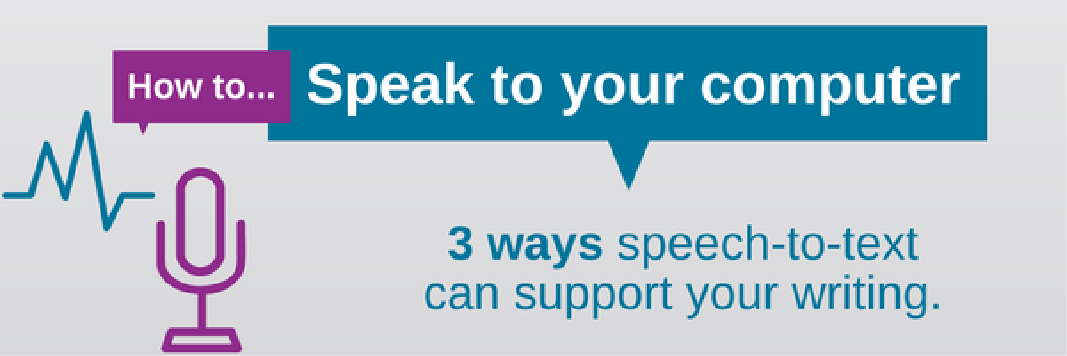This post will consider the benefits of speech-to-text tools. It will discuss software available at City with speech-to-text capability and also some free options.
It’s that time of year when you might be writing up a dissertation or thesis, or you may be using time over summer to reflect and explore new ways of working. Speech-to-text (also known as dictation or voice activation) could be the tool you’re looking for, helping to take the pain or strain out of typing.
3 ways speech-to-text can support your writing:
- Convenience and productivity. Once you get the hang of using dictation software it can be much faster than typing. Additionally, some programmes allow you to create a voice shortcut which can pop a whole phrase into your document.
- Neurodiverse learners. If you find it easier to verbalise your ideas, speech-to-text software frees you up to focus on what you want to say instead of on typing, spelling and editing text. Most software successfully does the spelling for you using an integrated dictionary.
- Reduce the barriers associated with typing which can cause or worsen fatigue or strain. Some speech to text programmes allow you to control and navigate your way around the computer. In documents you are working on, you can use your voice to format text, correct mistakes and punctuate your work.
Where can I access speech to text?
- For students registered and referred for this service by Learning Success, Dragon Professional is available in the Assistive Technology Centre (Individual rooms only), Northampton Square Library Level 2.
- Type with your voice, is available in Google Docs when using the Chrome browser
- io online dictation . This clever little tool comes with a recommendation from our friends in Learning Success. Emma Allsopp, Neurodiversity Support tutor says:
“ dictation.io has been so easy to access (via Google Chrome) and then use for transcribing some interviews I’ve been doing with students lately. I’ve avoided the hassles of press, rewind, type, pick up Dictaphone… and instead talked and let the computer do the typing. There are some of the usual hiccups, like study skills became daddy skills and, as for good, well… but it still saved me ages in write-up time. It’s even responsive to punctuation instructions. Worth a try for getting round those writing blocks, whatever shape they come in!”
Some points to consider:
- It can take a bit of getting used to. The software may not recognise what you are saying straight away and may need a little training.
- You will need somewhere quiet to use the software – not just so you don’t disturb others, but your microphone will pick up other noises that may effect accuracy.
- Speak clearly and at a normal speed and volume, speaking too slowly or loudly may effect recognition accuracy.
I used Dragon to draft this article.
References
McLoughlin, D. and Leather, C. (2013) The Dyslexic Adult: Interventions and Outcomes – an Evidence-based Approach, Second Edition, John Wiley & Sons, Ltd, Oxford, UK. doi: 10.1002/9781118323373
